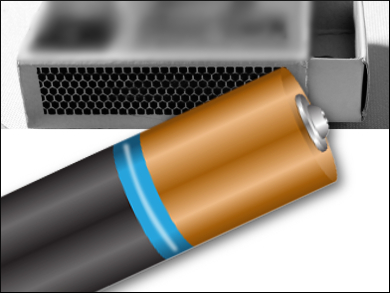Red phosphorus (RP) is an abundant, nontoxic substance that may be used as an anode material for lithium-ion batteries. It has a high theoretical capacity (2596 mA h g–1). However, like other materials (e.g., Si, Ge) that could substitute the commonly used graphite electrodes, RP also suffers from large volume changes upon cycling. In addition, RP also exhibits low conductivity, which hinders its application as an electrode material.
Hsing-Yu Tuan, National Tsing Hua University, Hsinchu, Taiwan, and colleagues have developed a simple solution-based method that yields RP nanoparticles (RPNPs) to overcome these obstacles. The NPs were obtained by reduction of PI3 in the presence of ethylene glycol and cetyltrimethylammonium bromide (CTAB).
The resulting RPNPs have sizes ranging from 100–200 nm and a conductivity 100 times higher than that of Si. The researchers attribute the conductivity to 3–5 wt% of iodine, which is present in the material as a dopant. The material has a specific capacity of 1700 mA h g–1, a long cycling life, and a good rate capability. The team successfully assembled a complete cell using the RPNPs and Li(Ni0.5Co0.3Mn0.2)O2 for the electrodes.
- Solution Synthesis of Iodine-Doped Red Phosphorus Nanoparticles for Lithium-Ion Battery Anodes,
Wei-Chung Chang, Kuan-Wei Tseng, Hsing-Yu Tuan,
Nano Letters 2017, 17, 1240–1247.
DOI: 10.1021/acs.nanolett.6b05081




